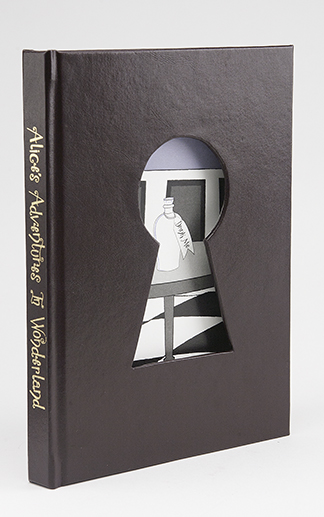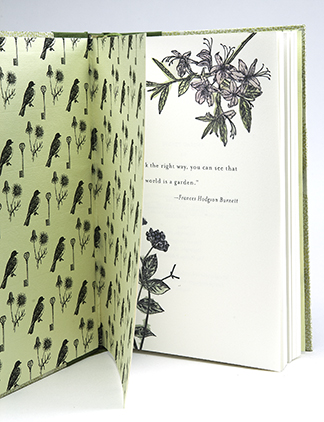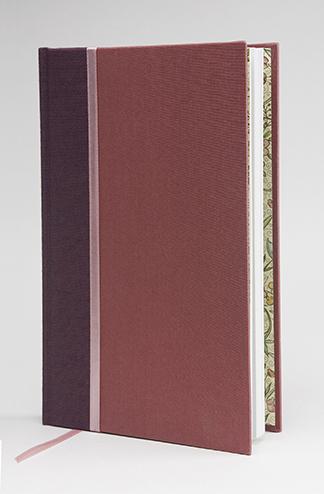Where have I been? I’ve been here, binding books.
For the past ten weeks I have been teaching a course called Book Design Technology. It’s a senior-level course for students of Graphic Communication in our Design Reproduction Technology concentration, which means that it applies to a relatively small number of our students.
The course is mostly about book typography, with the final project being the printing and hand binding of a book. The students go over the top on these projects, producing genuine works of book art that are also examples of perfection in typography and page presentation.
My students fold and sew signatures in class. This day was particularly satisfying – 29 students successfully made their book blocks ready to bind.
In the process, the students learn a lot about book typography, pagination, pattern search strings (GREP), and work flows. The art and science of making books is much more complicated than one would imagine. There were times when I thought it was too complicated, but the students rose to the occasion and exceeded all expectations. Their books are truly amazing.
Most of the book manuscripts were acquired from Project Gutenberg, a source for public domain books. If a book is out-of-copyright, it will likely be found there. The books in Project Gutenberg are typed by good-willed volunteers, and they vary significantly from title to title. Those variations include indented paragraphs, hard carriage-returns, all-cap chapter titles, word-cap subtitles, etc. With these manuscripts, the students learned a lot about strategic find-and-change. Long manuscripts (some of the books have nearly a thousand pages and hundreds of chapters) pose curious challenges to book typographers. How does one manage headlines, chapter titles, first paragraphs, continuing paragraphs? The key is to find patterns in the manuscript that allow for the automation of style tagging so that the students didn’t have to go through the entire manuscript manually applying the various styles to text as they prepared their books.
Tools of the trade: a bookbinder’s work requires a variety of tools not found in the average shop. Among them are shish-ka-bob sticks, a tub of PVA adhesive, bricks in wrapping paper, an awl, needles and thread, a bone folder, linen mull fabric, and a center-finding ruler.
The most difficult part of the typography was managing widows and orphans (and runts, which are hyphenated chunks of words). For this there is no shortcut. The students went through their books-in-progress, massaging the text to get orphaned lines to stay behind one page, or the get widows to stop nagging their children.
Once the manuscripts were complete in Adobe InDesign, we moved to the next step, which was pagination. There is no simple solution to book pagination except the professional and expensive imposition programs like Dyna and Preps. Cal Poly owns several licenses for Preps, and I did give it consideration because it makes short work of books. But I changed my mind in favor of a more complex but democratic process that the students could do on their own computers with nothing more than the Adobe Creative Suite.
One of my students made this lovely book using bonded leather cover material, a foil-stamped spine, and a hand-cut and shaped cover revealing custom endpapers. The title is hand-lettered, as are all the chapter titles in the book.
Preps would have been more effective in a four-up or eight-up sheet-fed production process. In this class, the students would be printing their final books on a Konica Minolta C8000 digital machine in four-page signatures. For that we used InDesign’s Print Booklet function which is very limited, but works nicely for small presses with two-page capacity. The process was surprisingly complicated. I had the students make 16-page signatures by exporting appropriate groups of pages to imposed pairs in PostScript format. Then, working with Adobe Acrobat Pro, they created a PDF from the long list of imposed signatures. Acrobat doesn’t do this directly, it calls on the almost-forgotten Acrobat Distiller to convert the PostScript pages into PDF en route, then it assembles the resulting files into a large PDF. It’s pretty fast, assembling one 600-page book into PDF in less than four minutes.
Another book features custom endpapers and hand-colored illustrations and initial letters in the text. This book is the Secret Garden.
The students also had a chance to learn how to calculate the yield of various press-size sheets, and to order enough paper to print a book and still have some paper left over for make-ready or errors. They ordered master sheets in either 23 x 35 or 25 x 38 size, then calculated a cutting list and worked with other students to cut the sheets into press-ready pages with enough outside space for bleeds and marks.
While my students were working on their class projects, I was making custom hand-sewn books for Christmas presents (please don’t tell my siblings). Making this edition of ten books allowed me to keep up with the students on their projects, and to get much-needed experience making books in small editions.
I have printed a lot of books in my career, but I had never hand-sewn a book before binding it (I had used only industrial machines for perfect-binding, or had used small-scale binding machines). Teaching this class required me to learn how to hand-sew book blocks, and then continue with binding. I took a bookbinding course during the summer, then taught my wife how to bind in fall, and I did it myself several times before showing the students how to do it. I also discovered a number of excellent videos on YouTube showing various techniques for binding books the old fashioned way.
At the end of the quarter, each student brought his or her finished book to a Book Fair that we held on the day of the final exam. I photographed each student with their book as a part of that event.
From the beginning of the quarter I was designing and producing a book of my own, using the same manuscript source as my students, and using the same production techniques to make my book. This allowed me to be where they were for the entire quarter. I stayed up late one night, hand-sewing my 632-page book for binding – which took over three hours. Then I glued up the block, added headbands and mull, and was ready to bind the “block” (pages) into the “case” (the cover).
My students printed their book pages, hand-folded and bound a first draft edition, and presented that to me. The purpose of the first draft was to test the process. The second and final book became the one they turned in for a grade. I know they didn’t get a lot of sleep in the last two weeks of the class (I know this because some of the books I received still had damp glue when I got them).
One day I taught the whole class full of students how to sew signatures using the traditional “kettle stitch” and “catch-stitch” technique used for millennia. For many, sewing was easy, for others it represented something they had seldom done in their lifetimes – if ever. Somehow we managed to sew six 16-page signatures in a 90-minute class, and everyone left the room with a complete book block.
The following week I showed them how to build the book case, and how to case-in the book block to the cover. Once again, everyone succeeded, and it was extraordinarily satisfying.
From the first experience with binding (the first book was blank), the students did all but the printing outside of class. At my house, the dining room table was covered with bookbinding supplies and books-in-progress. I am sure it was the same for my students.
A quarter-bound book by one of my students features three matching tones of book cloth. The workmanship is excellent, the typography flawless. She also added Italian endpapers to complement the book (Pollyanna) and the cover materials.
And, as the quarter came to an end, the pace increased. One cannot make glue dry any faster than it wants to dry, so that process created a natural deadline for the students. All of these fine young people showed up on the last day with a book in-hand. The books are spectacular, some are works of art. All met the requirements of the course, and all of them represent a monumental effort by the students to make a work of typographic art wrapped in a work on bookbinding art.
As a result of the commitment of my students, proven by their extraordinary work, this was the most satisfying class I have ever taught.









Looking great Brian! I’m stoked that they put such an important course in your able renaissance hands! I have taken up the craft of traditional bookbinding and have a workshop set up at my home, I would love to come to check out what you have going on there.